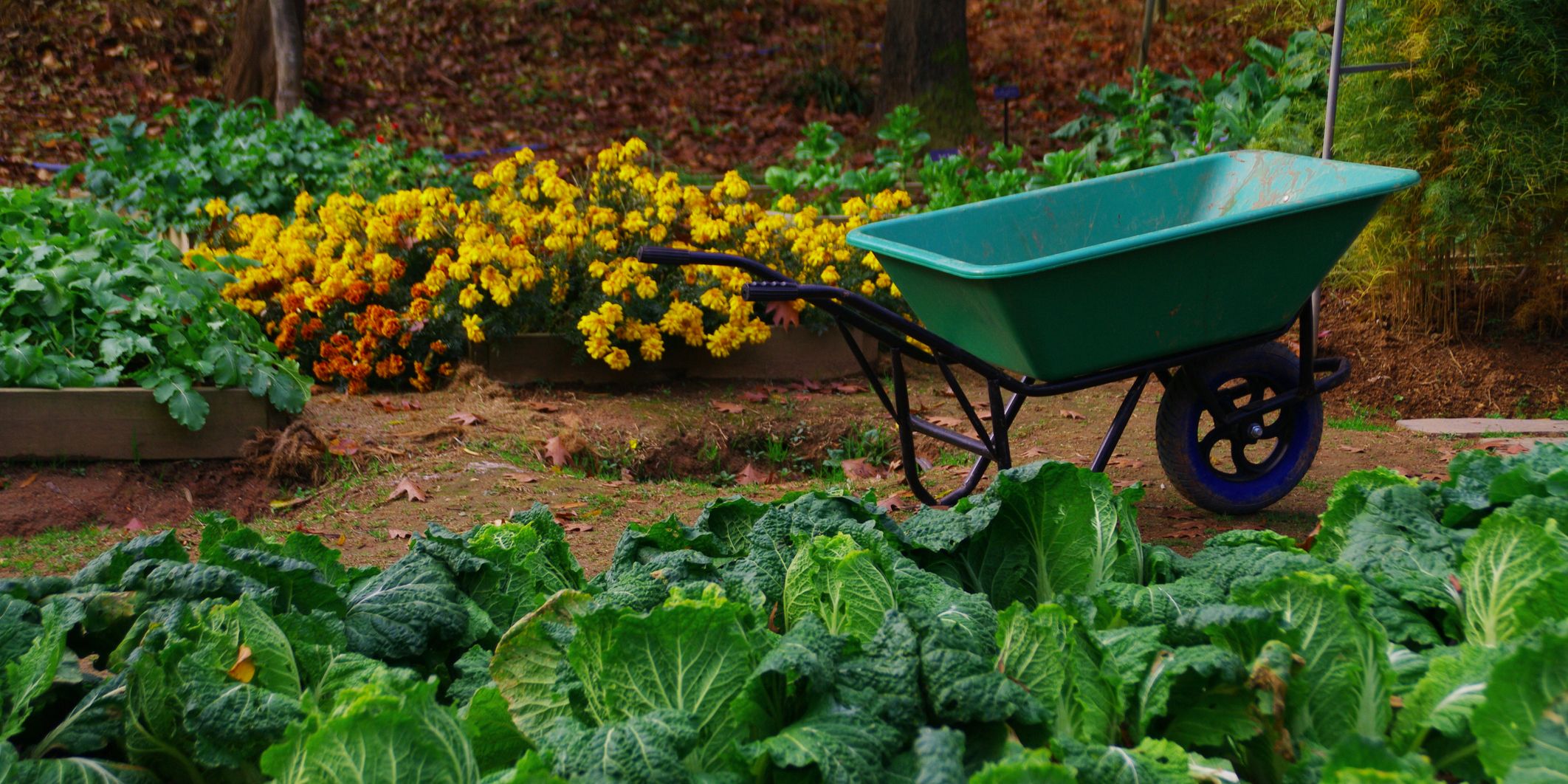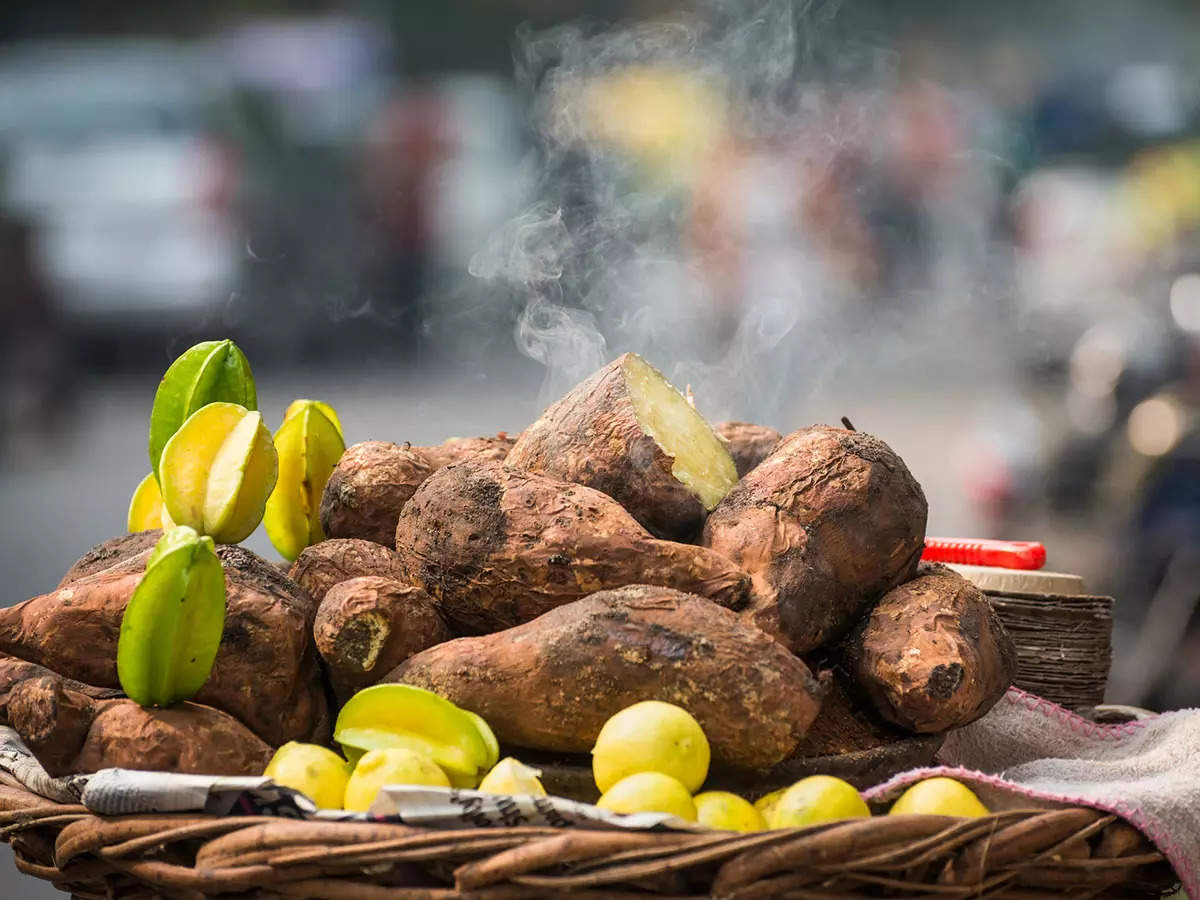Country Living editors select each product featured. If you buy from a link, we may earn a commission. More about us.
Here’s what and when to start planting in summer for an autumn harvest.
It’s never too early to think about fall vegetables! Just at the height of summer when your garden is overflowing with squash and tomatoes, it’s time to turn your thinking toward fall. Many cool season vegetables, such as greens and root vegetables, must be planted in mid to late summer to yield a fall harvest. To make sure they’re ready before the first frost in your area, look at the “days to maturity” on the plant tag or seed package, then count backwards from your area’s first frost date. If you’re not sure when that is, check with your local university coop extension service (find yours here). It’s also smart to add a week or so to that number because fewer hours of daylight in fall mean plants grow more slowly than during summer.
It’s also important to keep everything watered! In years when rainfall is sparse, you’ll need to make sure everything gets a good long drink if you haven’t had rain for a week or so. For some vegetables, such as greens, you’ll need to keep the soil moist while you’re waiting for the seeds to germinate. Also, cool season-lovers such as greens don’t germinate well in hot soil, so try to plant where taller vegetables can shade them, or you can try starting them in pots in a shady spot in your garden. Many fall garden vegetables grow well from seed, though a few do better in fall in northern gardens if you plant seedlings.
Here are the best vegetables to plant now for a fall garden.
Kale takes about 60 days to mature, and it comes in so many varieties from tender Red Russian to sturdy lacinato, or Tuscan kale. It’s quite cold-hardy and will taste sweeter after the first frost. In many regions, the plants will survive well into winter and green up again next spring.
Radishes are some of the fastest-growing veggies you can plant, with some varieties ready in as little as 3 weeks. Plant in containers or beds where you’ve pulled out spent summer vegetables.
This root vegetable is a reliable performer and is ready to harvest in about 60 days. Bonus: Both the leaves and the roots are edible.
Lettuce is one of the quickest crops you can grow, with baby leaves of some varieties ready in about 3 to 4 weeks. Plant a mix, or mesclun, for the best salad combination of different colors and textures. Lettuce also grows well in pots and window boxes because its roots are so shallow, but it’s not happy in the heat, so give it a little afternoon shade and keep the soil moist while waiting for it to sprout.
Beans actually are one of the crops that’s great to succession plant (planting seeds every two weeks) up until mid-summer. That way, you’ll have a continuous harvest. Many types of beans mature in about 2 months; plant bush beans, which mature a little faster than pole beans, which require a trellis or other support.
Carrots are another root crop that likes cool weather. There are many different types, but look for quick-growing dwarf varieties that mature in about 2 months.
If you’ve never tried growing turnips, you’re missing out! You can use both the greens and the roots of these root vegetables, which take about 2 months to mature. If you’ve never been a fan, try some of the newer varieties, which are sweeter.
It might not be on your list, but kohlrabi is a versatile vegetable to add crunch to stir fry and slaws. It takes about 40 days to mature, so it’s a great vegetable for a quick turnaround in your fall garden.
Peas, which take about 70 days to develop, typically are a spring crop because prefer cool weather. But you can give them a shot for a second crop in fall if you give them some shading such as a row cover, or plant them where they’re shaded from taller crops such as tomatoes.
Cauliflower loves cool weather, so it’s a natural for the fall garden, maturing in about 50 to 55 days. Start seeds in July to produce transplants, which can be planted late July. Or purchase seedlings from local nurseries for mid to late summer planting.
Cabbage takes about 60 days to mature, so plant seeds in mid-summer and transplant in late July. Or purchase seedlings and plant by mid to late summer.
This quick-growing green with a spicy bite is ready in less than a month. Plant it in late summer for a fast fall harvest.
Like many other greens, mustard greens don’t mind the cold and they are ready for harvest in about 45 days. Plant in late summer for a fall garden.
Swiss chard takes about two months to mature and keeps producing well into late fall. This beautiful, versatile edible, with its brightly colored pink, red, or white ribs, is pretty enough to plant among your flower beds if you don’t have space in garden beds.
Broccoli seeds can be direct sown in warm climates about 100 days before the first expected frost. Or in colder parts of the country, start seeds in mid-summer and transplant into your garden by late July.
15 Vegetables to Plant in the Fall – How to Plant Fall Vegetables – Country Living





